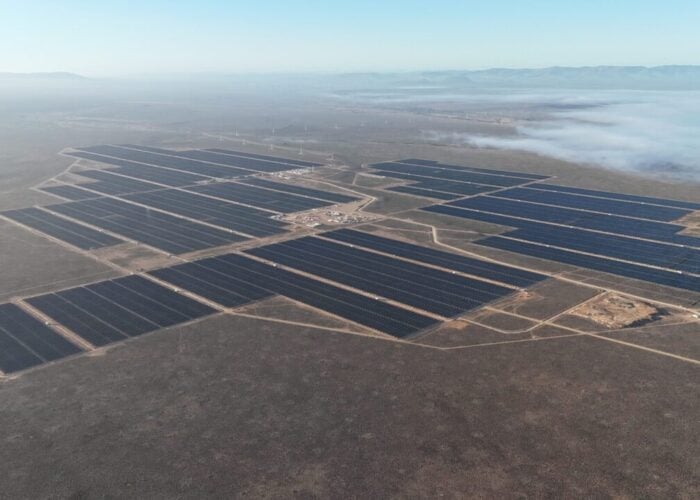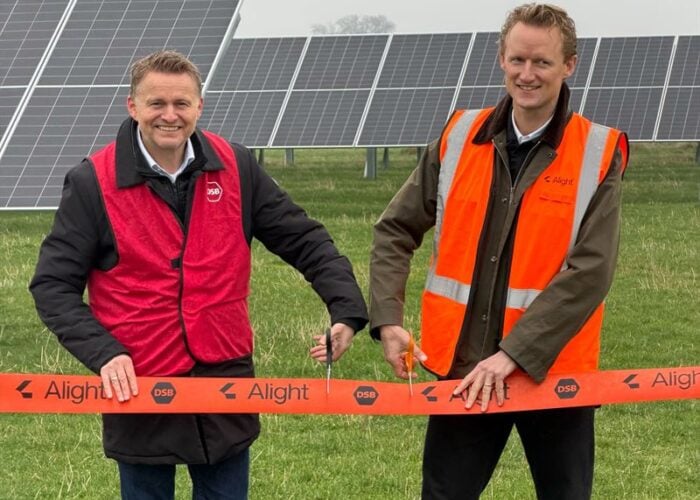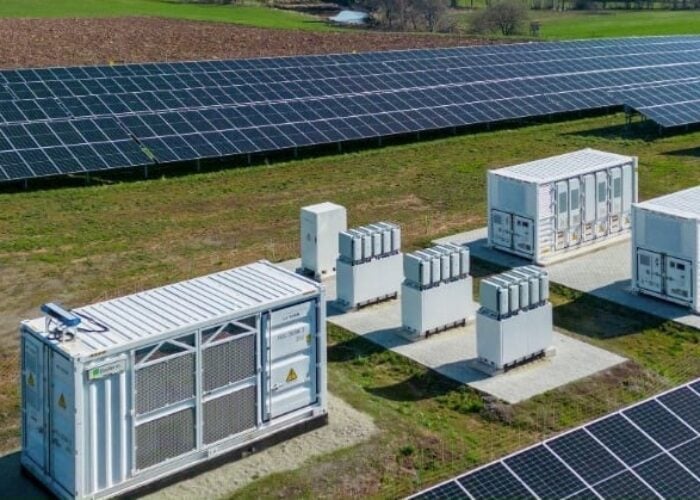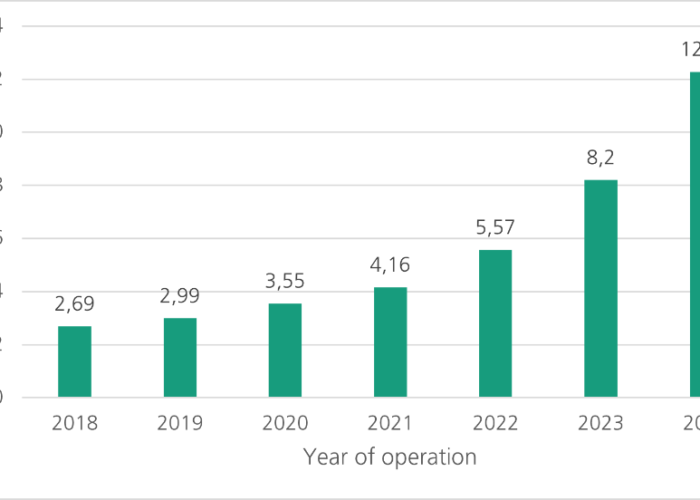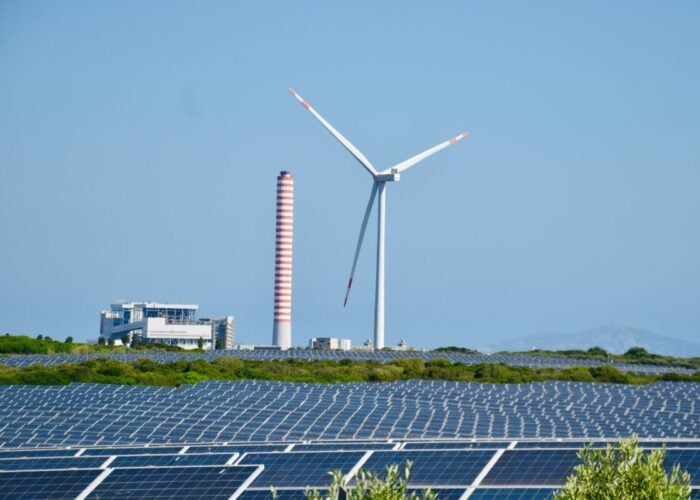
Battery energy storage systems (BESS) are “the new player that everyone is talking about,” in Europe’s power purchase agreement (PPA) space, as developers and offtakers look for increasingly tailored solutions in an increasingly volatile market environment.
This is according to Frederico Carita, senior director of account management at analyst LevelTen Energy, who spoke on a panel discussion this morning organised by the analyst to coincide with the launch of the company’s latest European PPA report.
Try Premium for just $1
- Full premium access for the first month at only $1
- Converts to an annual rate after 30 days unless cancelled
- Cancel anytime during the trial period
Premium Benefits
- Expert industry analysis and interviews
- Digital access to PV Tech Power journal
- Exclusive event discounts
Or get the full Premium subscription right away
Or continue reading this article for free
Published last week, the report notes that European solar PPA prices fell below €35/MWh (US$40.8/MWh) in the third quarter of this year, and Carita drew a distinction between solar and wind prices, in particular, in the European market.
“When we look at the market-averaged continental index, we see that wind has been stable in the last three quarters, solar has been coming down for a while now—of course, this is a fruit salad with different fruits every quarter because we have projects in different countries—but you can see more or less where the trends go,” he explained.
However, while he noted that solar accounted for around 90% of the deals tracked in the third quarter by LevelTen—pointing to something of an “oversupply” in solar projects looking for offtake agreements—he said that the co-location of renewable energy generation and BESS offers significant potential for the European power market.
“Can storage help transform PPAs into something smarter and more flexible?” he asked. “We’ve been doing a lot of work around this … we are trying to look into how you combine solar and storage or wind and storage, which is what we call a hybrid, [and] how can you combine that in a way that works for the developer, and also works for the buyer, so you can get your project financed.”
‘Hybrid introduces additional complexities’
Reaching agreements that benefit all parties involved in a PPA, and that take into account the differences between components such as solar and storage, are some of the key challenges in securing more hybrid PPAs, according to Damla Yucebas, senior managing consultant, renewable energy solutions, at South Pole, who spoke during the webinar.
“Hybrid introduces additional complexities,” she explained. “A successful PPA contract is a balanced one between the buyer and seller. There are some technical and operational considerations from buyers—how will the battery be dispatched, will it be used to optimise market revenues, will it be used to navigate negative prices?—and they need to be clear in the contract, too.”
“The other bit is the question of where’s the starting point?” asked fellow panellist Clara Rehder, manager of industrial decarbonisation at utility EnBW (Energie Baden-Württemberg AG).
“Do you already have a lot of PV in your portfolio—and therefore it’s interesting to have a more baseload structure added—or are you willing to have a larger battery? All of these needs have to be met with the needs of the development side.”
Rehder’s comments come as many developers look to add storage components to solar projects that have been operating for some time, which raises practical challenges regarding project construction, modification and operation.
Earlier this month, Mauro Rivola, VP of international sales and export director for solar PV, BESS and H2 at Ingeteam, told PV Tech that Solar Media’s Large Scale Solar Southern Europe event saw “a much stronger focus on storage integration” this year than in previous editions of the event, as appetite for new storage additions grows across the continent.
“Pricing and risk allocation are the biggest hurdles [on the commercial side],” continued Yucebas. “The right balance is often more challenging with hybrid structures and storage, as both parties need to agree on how risks and benefits will be shared between generation and storage components.”
She also suggested that “first-time buyers” in particular can face challenges understanding the nuances of the solar-plus-storage and standalone storage sectors, particularly if they have invested more in standalone solar in the past. This can lead to companies seeking “overly conservative terms” in their agreements, which are a less risky investment in the short-term, but will ultimately not realise the full financial potential of their investments.
Building knowledge, minimising volatility
“Despite these challenges, we’re seeing an increasing interest in hybrid PPAs … storage is no longer just nice to have, it’s increasingly becoming a strategic part of PPA contracts,” said Yucebas, who went on to say that “knowledge-building” is a key component of investing in solar and storage assets.
“This helps [investors] negotiate from a position of confidence, and helps them not be overly conservative, but negotiate for their benefits.”
Indeed, LevelTen’s latest report pointed to a “surge” in hybrid PPA offers, including both renewable energy generation and storage, as more companies become familiar with the intricacies of the market.
“While these offers vary in shapes and structures, convergence in the hybrid space is gradually occurring as buyers explore the contracting structures and project types that meet their needs,” wrote LevelTen.
However, Rehder suggested that co-location is not yet a compulsory component of the European offtake space; “we’re seeing the growing interest [in hybrid assets] that everyone is, but I wouldn’t call it mandatory yet,” she said. However, she was confident that co-location is now a factor that is being considered more often than not.
“Checking whether you can have a BESS or not is becoming standard procedure, and then looking at the option that you have on the commercial side, it depends on the battery that you have implemented, and the different revenue streams that you can tap into,” she said. “We definitely expect an uplift in the prices you can generate with such a hybrid project, how much it will be exactly depends on many factors.”
Fundamentally, developers and offtakers alike are keen to minimise the impacts of price volatility that have affected the European power sector for several years, and Redher argued that storage is a key way to introduce that stability.
“We’re in a very exciting phase of the market, so structures are evolving and can be highly customised, based on the market’s needs. It feels like everyone’s still figuring this out,” she said. “At the end, the product depends on your interest: if you want to have a more baseload profile, [one that] shifts the hours from the peak to the afternoon, or if you’re really willing to contract a flexible asset.”

